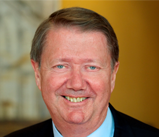

| Home |
10 July 2010
Disturbing the Serenity
Tag(s): Marketing, HistoryI recently visited Venice with my daughter as part of an unstructured programme over the years of showing her some of the world’s great cities. We have been to New York and Rome together and I would have taken her to Paris and Florence but her schools got there first and did a poor job by all accounts. Venice, La Serenissima, is one of my very favourite cities. It may be overcrowded and over priced. It can even be smelly. All cities are unique in some way but Venice is unique in its uniqueness. The best cities are all built on the water’s edge, either by a river bank, a lake side or on the sea coast. But Venice is built on the water.
She is the home of Marco Polo, the world’s most famous tourist, Machiavelli, the world’s most famous political adviser and Casanova, the world’s most famous lover. Some of its finest homes were built by Palladio, the world’s most famous architect. She is the home of Monteverdi and Vivaldi. She is the home of Titian, Giorgione, Tintoretto, Tiepolo, Veronese, Canaletto and Canova. She is the home of Bellini, immortalised in Harry’s Bar by a cocktail. She is the home of Carpaccio, immortalised in Harry’s Bar by a raw piece of beef. Harry’s Bar was itself immortalised by Ernest Hemingway as one of the many watering holes at which he quaffed around the world. He followed a long diaspora of artists and writers who came to Venice for their inspiration. Byron swam up the Grand Canal and Henry James wrote The Aspern Papers there. Dickens and Proust drank in the Café Florian (it costs 6 Euros just to sit down there now!) Rossini’s Tancredi, Verdi’s La Traviata, Stravinsky’s The Rake’s Progress and Britten’s Turn of the Screw were all premiered in Venice. Richard Wagner and Robert Browning both died there.
For over 500 years Venice was a Republic with an elected leader with no hereditary rights. It took Napoleon to bring this to an end as yet one more of his war crimes.
Throughout its history Venice has needed restoration compounded by its unusual foundations. Floods in the 1960s brought this to a crisis and a major international appeal raised funds for the cleaning of historic buildings, statues and paintings. Funds raised are coordinated under the auspices of UNESCO. At present subsidence seems to be held at bay.
Since my last visit there has been an outbreak of scaffolding, no doubt inevitable in this process of restoration. Some of this is shrouded to soften the views. However, the fly in the ointment is that some of these shrouds are apparently sponsored with enormous advertising images printed on them bigger than any billboard. The Libreria Sansoviniana, opposite the Doge’s Palace in the Piazzetta San Marco, praised by Andrea Palladio as the finest building since antiquity, is covered by a huge shroud screeching the merits of Dolce & Gabbana. In the main square the Ala Napoleonica is similarly screened, this time bellowing the blandishments of Murphy & Nye, a sailing clothing brand. Worst of all, the Bridge of Sighs, which links the Doge’s Palace with the prisons, is almost completely covered by a vast blue canvas yelling the attractions of Montblanc writing instruments.
Venice receives 14 million visitors a year and so one can understand the commercial attractions of such sites. One can also understand that commercial funds are sought to support such restoration activities. But it is truly offensive to the eye. Perhaps these European brands could have learnt from Hyundai in Korea which bought ad space on the Seoul Metro and left it vacant, simply to give consumers some respite. Venice is traditionally so careful in managing its image. For example, Burger King is only allowed to operate if its usually vulgar external image is restrained and only apparent once you enter the restaurant.
Commercial advertisers only function by the permission of their audiences, not only the specified target audience but all audiences who will come into contact with their message. Some advertisers set out to shock as a way of establishing awareness. Benetton, another Italian brand, has made a career out of doing this. But such strategies are fraught with danger and I for one will not be buying any Dolce & Gabbana, Murphy & Nye or Montblanc products.
How could they let it happen?
Blog Archive
Boards Business Chile Current Affairs Education Environment Foreign Affairs Future Health History In Memoriam Innovation Language & culture Language and Culture Languages & Culture Law Leadership Leadership & Management Marketing Networking Pedantry People Philanthropy Philosophy Politics & Econoimics Politics & Economics Politics and Economics Science Society Sport Sustainability Sustainability (or Restoration) Technology Worshipful Company of MarketorsDavid's Blog
© David C Pearson 2025 (All rights reserved)